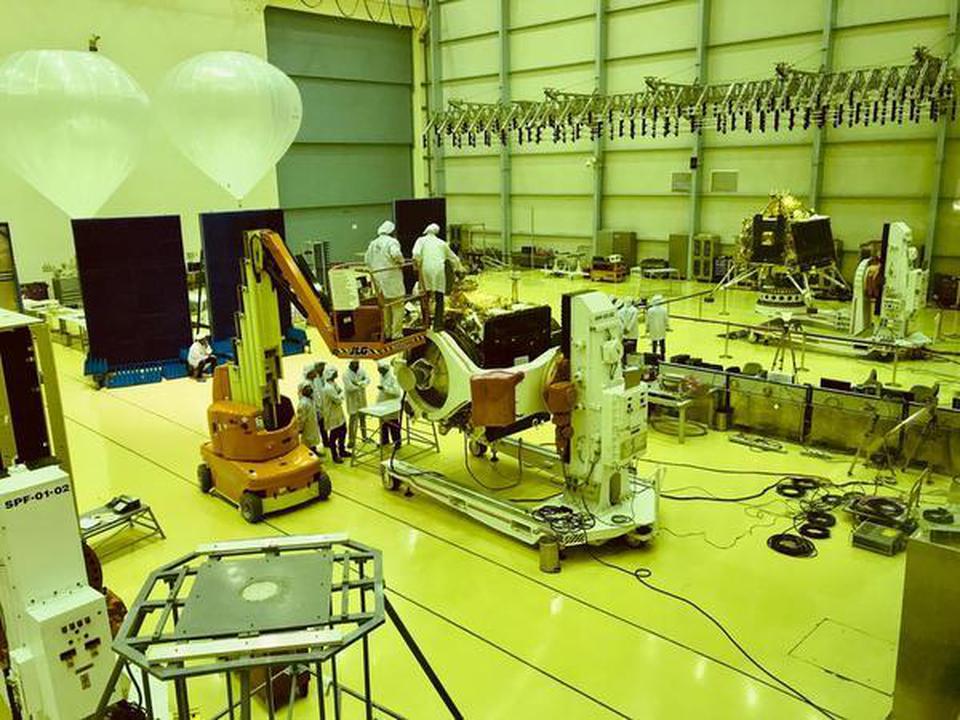
The Lander and Orbiter of Chandrayaan -2 being test and assembled by ISRO scientists at ISITE, in Bengaluru
Chandrayaan-2, India’s second Moon mission, will be launched on July 15, Indian Space Research Organisation (ISRO) Chairman K. Sivan announced on Wednesday.
Chandrayaan-1 mission was launched about 10 years ago.
Chandrayaan-2, which will be launched at 2.51 a.m. from Sriharikota, includes a lander and a rover for the first time in an Indian space mission. The moon landing is planned for September 6 or 7. The spacecraft, with a mass of 3.8 tonnes, has an orbiter, the lander (Vikram) and the rover (Pragyan). The mission costs ₹603 crore for the spacecraft system and ₹375 crore for the launcher, a GSLV-MKIII. The lander and the rover will have the Tricolour painted on them.
The Ashoka Chakra will be imprinted on the rover’s wheels. The orbiter, with scientific payloads, would go around the Moon. The lander would soft-land on the Moon at a predetermined site and deploy the rover. Instruments on the lander and the rover would also carry out scientific experiments, the ISRO said. The scientific payloads are expected to perform mineralogical and elemental studies of the lunar surface.
The orbiter and the lander would be interfaced mechanically and stacked together as an integrated module and accommodated inside the GSLV MK-III. The rover is housed inside the lander. After the launch into an earth-bound orbit by GSLV MK-III, the integrated module would reach the Moon orbit using the orbiter propulsion module, and subsequently, the lander would separate from the orbiter and soft-land at the predetermined site, close to the lunar South Pole. The rover would then roll out, the ISRO said.